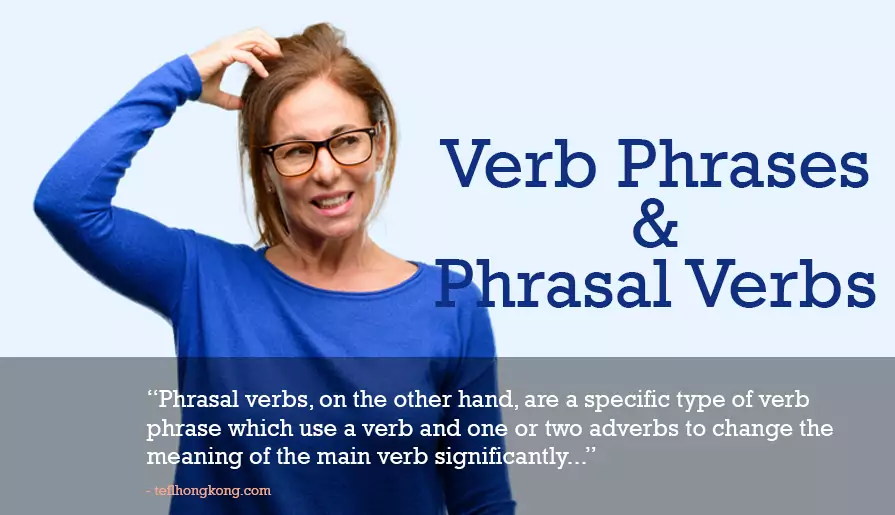
- By: Tom Garside
- In: For Teachers
English grammar is a tricky beast. The many overlaps between spellings, word classes, meanings and functions mean that even the smallest parts of structure can be confusing for teachers and students alike. Here are three common misconceptions about grammar which cause issues, and some ways to clarify them for your teaching and for your students when they come to study them.
Teacher Training Courses:
1. CertTESOL: Certificate in TESOL
A level 5, initial teacher training qualification for new and experienced teachers, equivalent to Cambridge CELTA.
2. CertPT: Certificate for Practising Techers
A level 6, online professional development course for working teachers.
Verb phrases and phrasal verbs
The English verb system comes from many different language roots, with structures from French, German and Scandinavian languages left behind after repeated colonisations of different parts of the UK over the years. Being one of the most variable forms in English, verbs have taken on a lot of the diversity of this linguistic history, and one commonly studied (and commonly misunderstood) class of verbs is represented by phrasal verbs, not to be confused with verb phrases.
A verb phrase is simply more than one word which represents a verb, for example:
‘looked carefully at’
– in the sentence
‘he looked carefully at the painting to find the artist’s signature’.
Many tenses use auxiliaries and main verbs in their structure, for example:
‘had been looking’
– in the sentence
‘he had been looking for his keys for thirty minutes when he realised they were in his pocket’.
Many classes of word (adverbs, prepositions, auxiliaries) can go together with verbs to change their meaning slightly, combining to form verb phrases.
Phrasal verbs, on the other hand, are a specific type of verb phrase which use a verb and one or two adverbs to change the meaning of the main verb significantly.
Compare the meanings of the verbs ‘look’, ‘think’ and ‘come’, and the meanings of the phrasal verbs ‘look into’ (as in ‘the inspector looked into the history of the suspect’), ‘think through’ and ‘come up with’ (as in ‘come up with a solution’. You will feel that the meanings carried by the phrasal verbs are quite different from those of the single verbs.
In summary, remember that all phrasal verbs are verb phrases (they contain more than one word, and represent a single action), but not all verb phrases are phrasal verbs.
Also Read: Teaching Grammar The Fun Way
Linking prepositions and adverbs in phrasal verbs
Adverbs in phrasal verbs such as ‘look into’, ‘think through’ and ‘come up with’ very often look like prepositions, but are in fact adverbs. This is one reason why phrasal verbs are a challenge to teach and to learn. Let’s take a step back and think about the role of prepositions and adverbs in sentences.
Prepositions have a linking function between nouns and verbs. They are always followed by nouns (except when they controversially end sentences), and they usually communicate where or when the verb happens. One function of adverbs, on the other hand, is to modify or describe verbs, usually adding information about how the verb was performed by the subject. Look at the following examples:
a) The inspector looked into the murder
b) The inspector looked into the room
In sentence a), ‘into’ is modifying the type of looking that the inspector performed: not the type of looking we do with our eyes, but looking into meaning investigating more closely. In this sentence, ‘into’ changes the meaning of ‘looking’ in this way; a significant change in meaning. Because ‘into’ modifies ‘look’, we can show the sentence as being broken down as follows:
“The inspector” – “ looked into” – “the murder”
In sentence b), the meaning of looking is not changed – the inspector is looking at something with his eyes, so ‘into’ describes where he was looking: inside the room through the door or window. This means that the ‘into’ in this sentence is a preposition, showing where, not changing the meaning of the verb, so the sentence can be broken down as:
“The inspector” – “looked” – “into the room”
Thus, the ‘looked into’ in a) is a phrasal verb, whereas the looked+into of b) is a verb and a preposition.
Also Read: Student Led V/s Teacher Led Classes
Splitting phrasal verbs with an object pronoun
Another tricky point about phrasal verbs is their ability to be split by an object pronoun (me / you / him / her / it / them / us). This is another good way to determine whether you are looking at a simple verb phrase or a more complex phrasal verb. Think about the following phrasal verbs:
look up (a word) think about (an idea) talk about (some news)
look into (a mystery) think through (a plan) talk through (a plan)
All of these are phrasal verbs, which use adverbs to change the meaning of the verb in each case. However, there is a key difference in how they can be structured. In each pair of phrasal verbs, how many ways are there of including the object (in brackets) along with the phrasal verb in a sentence?
Solutions…?
Unfortunately, there is no easy fix to help students remember which phrasal verbs can or cannot be split by a direct object, but categorising them by which adverb is used (as in the two ‘through’ examples, above, which can both be split as ‘think it through’ and ‘talk it through’) can offer clues to meaning (‘through’ here meaning ‘from beginning to end’).
Similarly, the phrasal verbs using ‘about’, above, cannot be split. Finding groups of phrasal verbs which are linked by one of their features, or by a strong context, can help learners to remember them more easily.
Please Share:This article was originally published on July 30, 2019 and was last updated on December 17, 2020.
Courses We Offer:

1. CertTESOL: Certificate in TESOL
A level 5, initial teacher training qualification for new and experienced teachers, enabling you to teach English anywhere in the world. The course is equivalent to Cambridge CELTA.
Learn More
Developed by our Trinity CertTESOL experts, for a comprehensive, self-paced learning experience. Earn an internationally recognized certificate and master essential teaching skills, accessible globally 24/7.
Learn More